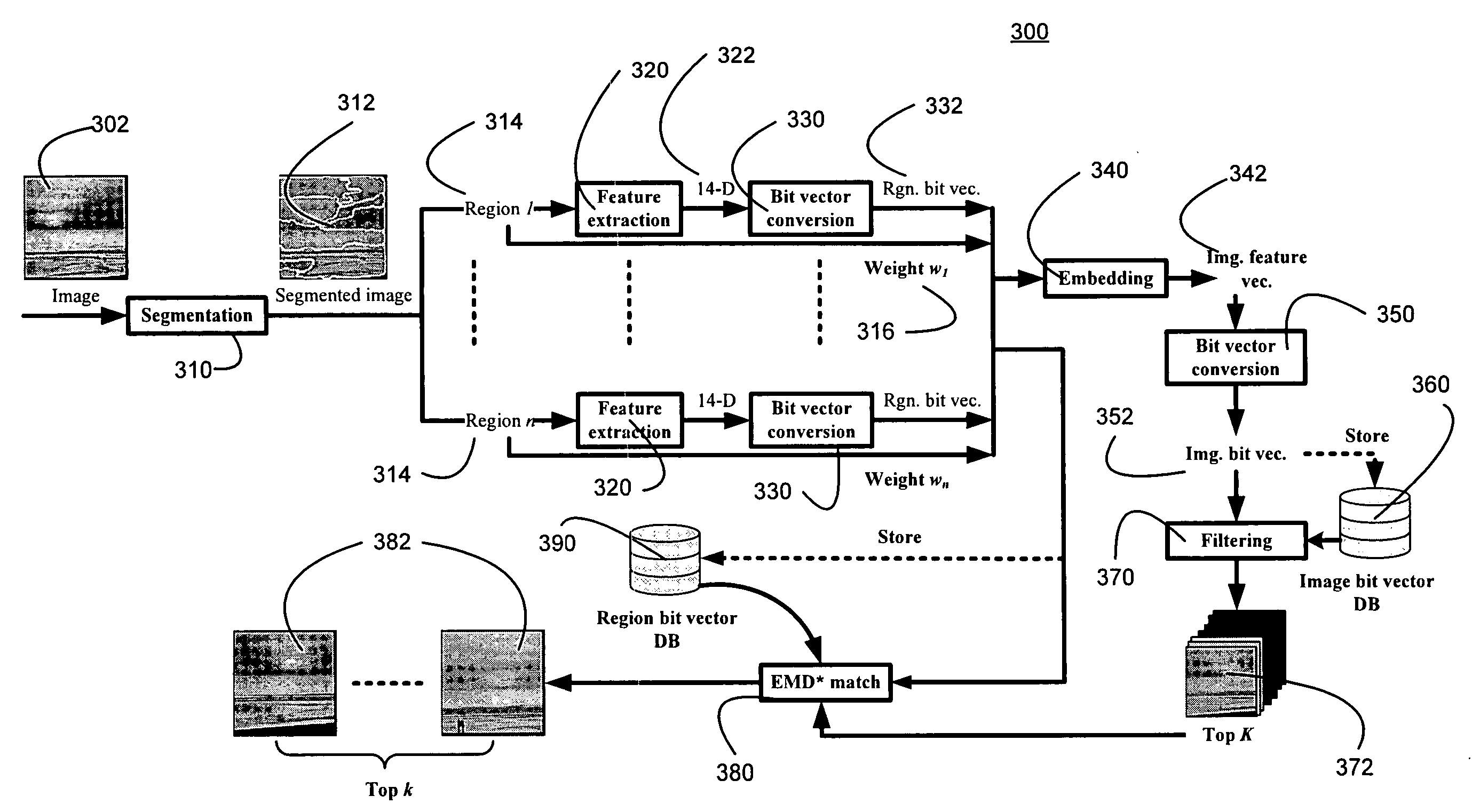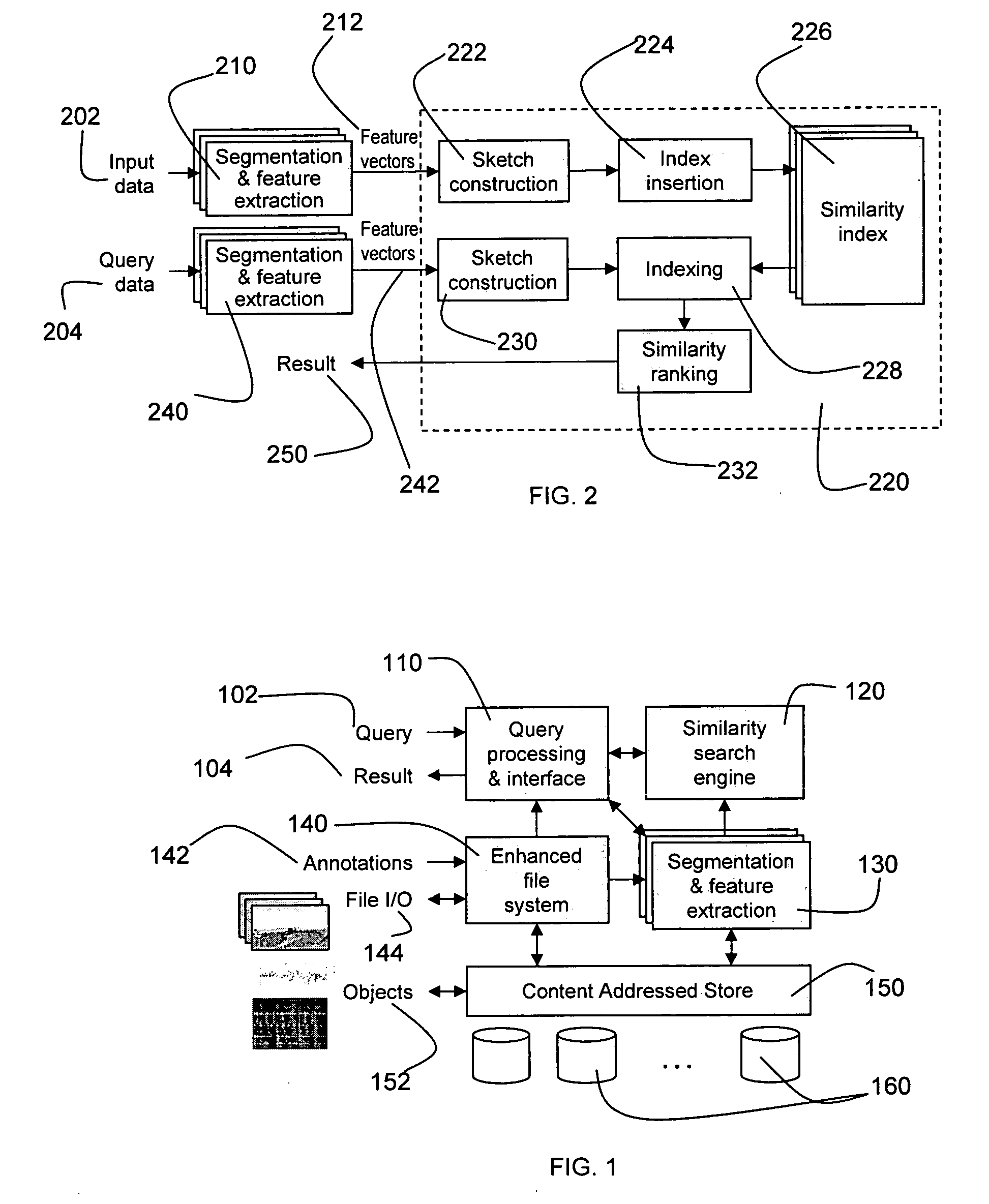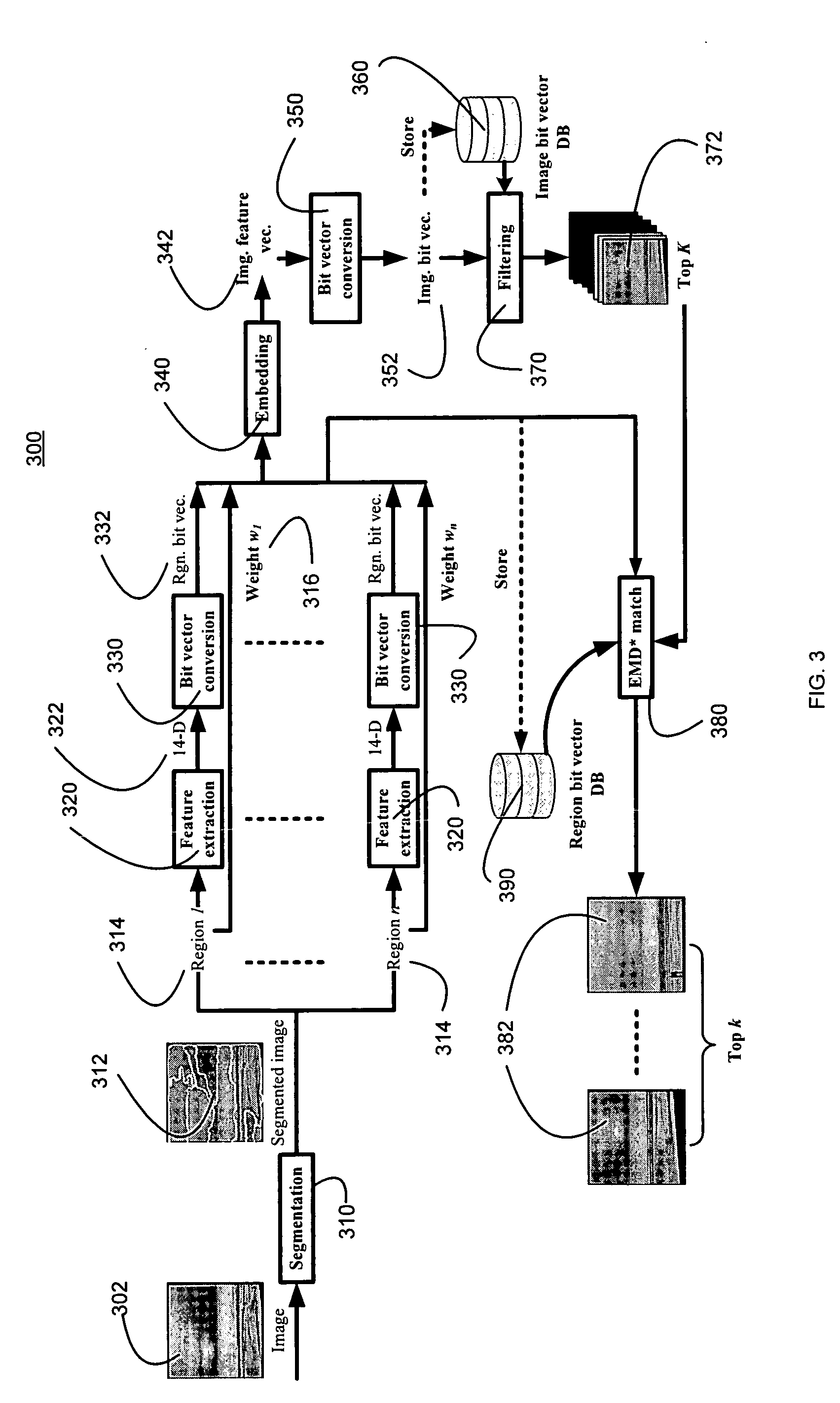Similarity search system with compact data structures
a data structure and similarity technology, applied in the field of similarity search system with compact data structure, can solve the problems of low work efficiency, low work efficiency, and difficulty in remembering file names, and achieve the effect of reducing the amount of work
- Summary
- Abstract
- Description
- Claims
- Application Information
AI Technical Summary
Benefits of technology
Problems solved by technology
Method used
Image
Examples
Embodiment Construction
[0041] The present invention provides a content-addressable and searchable storage system. The data in the system preferably is organized dynamically based on demand. The system has a similarity search engine for searching massive amounts of feature-rich, noisy, high-dimensional data.
[0042] The general system architecture of a preferred embodiment of the invention will be described with reference to FIG. 1. The general system architecture has four main data paths: objects 152; file I / O's 144; annotations 142, and search queries 102. Objects can be addressed directly through a content-addressed store 150 that implements a content-addressed abstraction. A client can store a data object into the content addressed store 150 and get its fingerprint or hash back as its “id.” The content addressed store allows clients to access segments of an object. The storage system uses fingerprints as the uniform mechanism to address both data objects and segments.
[0043] Clients can perform regular ...
PUM
 Login to View More
Login to View More Abstract
Description
Claims
Application Information
 Login to View More
Login to View More - R&D
- Intellectual Property
- Life Sciences
- Materials
- Tech Scout
- Unparalleled Data Quality
- Higher Quality Content
- 60% Fewer Hallucinations
Browse by: Latest US Patents, China's latest patents, Technical Efficacy Thesaurus, Application Domain, Technology Topic, Popular Technical Reports.
© 2025 PatSnap. All rights reserved.Legal|Privacy policy|Modern Slavery Act Transparency Statement|Sitemap|About US| Contact US: help@patsnap.com



